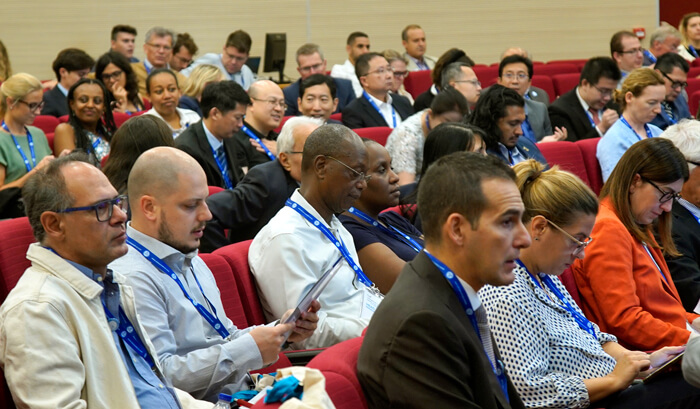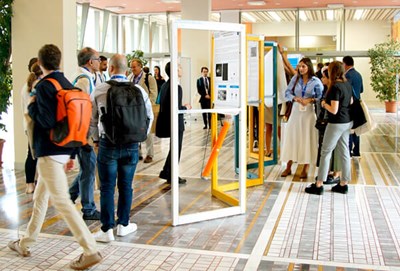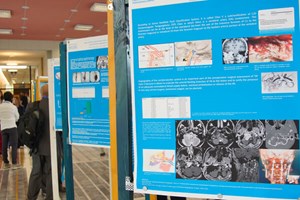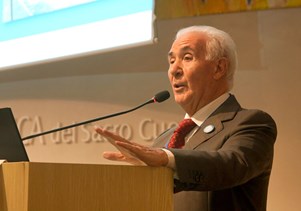
 Renato Mariani-Costantini, MD, Center for Advanced Studies and Technology, Gabriele d’Annunzio University, 66100, Chieti, Italy, and Karel Pacak, MD, PhD, DSc, FACE, Section on Medical Neuroendocrinology, Eunice Kennedy Shriver National Institute of Child Health and Human Development, National Institutes of Health, Bethesda, Maryland, USA.
Renato Mariani-Costantini, MD, Center for Advanced Studies and Technology, Gabriele d’Annunzio University, 66100, Chieti, Italy, and Karel Pacak, MD, PhD, DSc, FACE, Section on Medical Neuroendocrinology, Eunice Kennedy Shriver National Institute of Child Health and Human Development, National Institutes of Health, Bethesda, Maryland, USA.
Head and neck paragangliomas (HNPGLs) are hypervascular neural crest tumours that mainly originate from the parasympathetic paraganglia of the lower cranial nerves. These tumours are rare (<0.5% of all head and neck tumours) and tend to grow very slowly but are invasive and radio/chemoresistant. Depending on the site of origin, they cause serious or even life-threatening complications. Metastatic risk is low but never excludable.
These deceptive tumours represent a major challenge to ENT specialists, who are generally the first physicians to have contact with HNPGL patients. It is mandatory that ENTs fully understand that HNPGLs are highly hereditary (up to 50-70% of cases), are often multiple, have high recurrence rates, and are capable of relatively rapid local infiltration and metastasis.
 Hence, the message of the First International Congress on Update on the Management of Head and Neck Paragangliomas was that all HNPGL patients should be addressed to appropriate genetic counselling, careful scanning should be performed to rule out tumour multiplicity in the head and neck and in the trunk, and surgical treatment versus a wait and scan approach should always be assessed in highly-specialised centres, while therapeutic alternatives to surgery, such as chemotherapy and radiotherapy, remain a complex and still debated issue.
Hence, the message of the First International Congress on Update on the Management of Head and Neck Paragangliomas was that all HNPGL patients should be addressed to appropriate genetic counselling, careful scanning should be performed to rule out tumour multiplicity in the head and neck and in the trunk, and surgical treatment versus a wait and scan approach should always be assessed in highly-specialised centres, while therapeutic alternatives to surgery, such as chemotherapy and radiotherapy, remain a complex and still debated issue.
Presently, there is a strong need for promoting the development, discussion and dissemination of new knowledge on HNPGLs. The lack of studies and dedicated meetings have contributed to scarce disease awareness among health professionals, as well as stagnation in therapeutic development and lack of evidence-based international management guidelines or consensuses.
 To meet these challenges, the Mario Sanna Foundation launched the First International Congress on Update on the Management of Head and Neck Paragangliomas, which took place in the ancient town of Piacenza, Italy. The congress gathered 310 participants from 35 countries and gave a comprehensive, interdisciplinary analysis of the present state of the art in HNPGL research, diagnosis, treatment and follow-up.
To meet these challenges, the Mario Sanna Foundation launched the First International Congress on Update on the Management of Head and Neck Paragangliomas, which took place in the ancient town of Piacenza, Italy. The congress gathered 310 participants from 35 countries and gave a comprehensive, interdisciplinary analysis of the present state of the art in HNPGL research, diagnosis, treatment and follow-up.
The programme consisted of 14 plenary sessions (86 speakers) spanning three days. The first was dedicated to general themes (genetics, pathology, nuclear medicine, radiological and surgical anatomy), the second to tympanic, tympanomastoid and tympanojugular HNPGLs, and the third to carotid body and vagal HNPGLs. For each of these distinct HNPGL subsets the speakers addressed surgical anatomy, radiological subclassifications, angiography, embolisation, surgical management, alternatives to surgery, complications, metastases, management of bilateral or multiple tumours, outcomes, surveillance and post-surgical rehabilitation.
 The congress also featured dinners for speakers and delegates, with culinary products typical of the Piacenza area, that allowed relaxed socialisation in warm and elegant settings. Professor Mario Sanna (right), a gracious host and organiser, shared his pioneering experience in the development of HNPGL surgery and inspired the delegates with his leadership. The Mario Sanna Foundation provided free participation to 100 last-year ENT residents designated by European Residency programmes, an initiative finalised to foster education and training based on the latest discoveries on HNPGLs.
The congress also featured dinners for speakers and delegates, with culinary products typical of the Piacenza area, that allowed relaxed socialisation in warm and elegant settings. Professor Mario Sanna (right), a gracious host and organiser, shared his pioneering experience in the development of HNPGL surgery and inspired the delegates with his leadership. The Mario Sanna Foundation provided free participation to 100 last-year ENT residents designated by European Residency programmes, an initiative finalised to foster education and training based on the latest discoveries on HNPGLs.
This pilot congress highlighted the fact that HNPGLs have been thus far neglected and understudied. To fill these gaps, the experts convened in Piacenza decided to establish a triennial HNPGL congress, with the mission of furthering the basic science and the clinical understanding of these tumours and improving patient care and outcomes.



